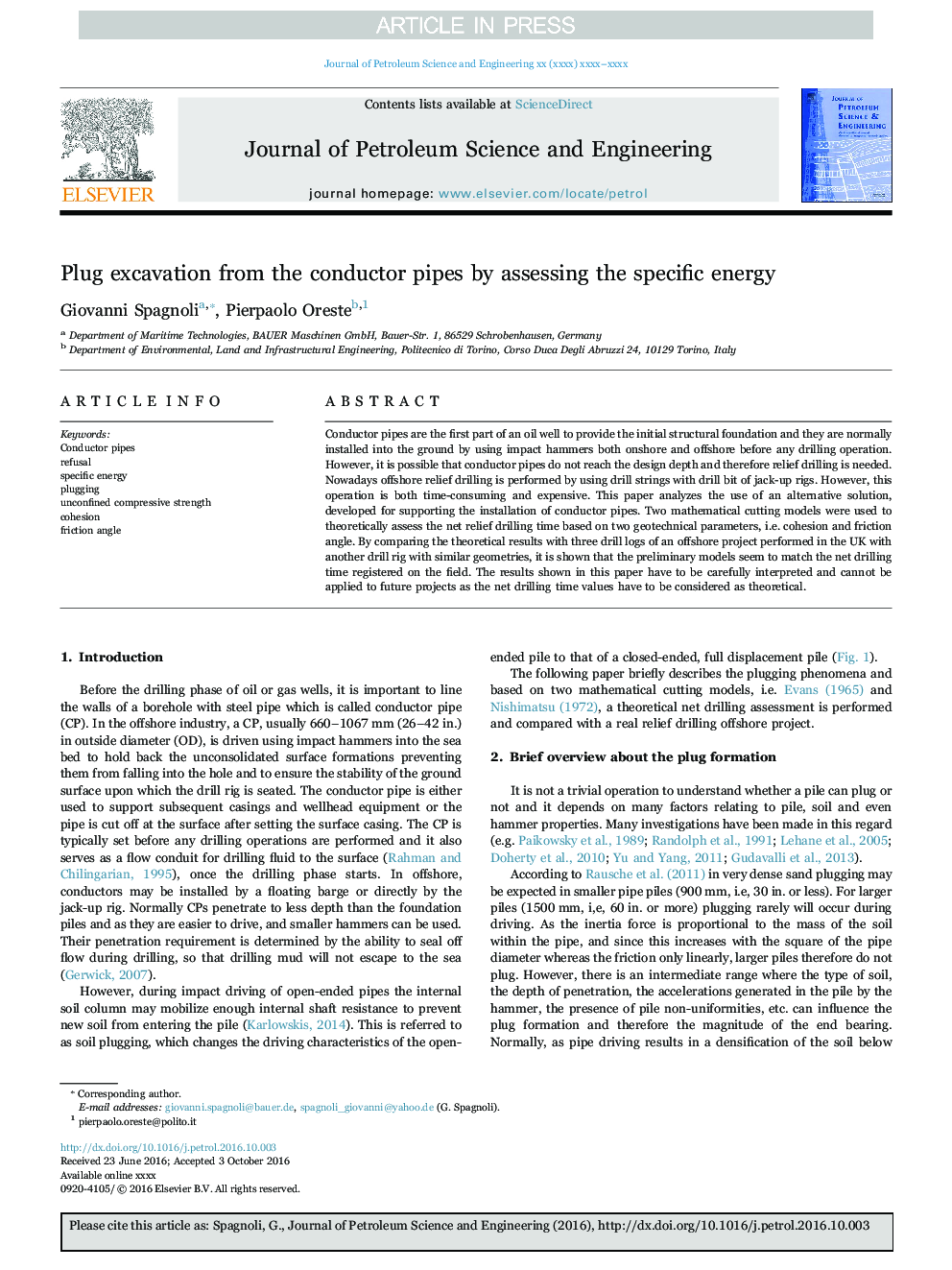| Article ID | Journal | Published Year | Pages | File Type |
|---|---|---|---|---|
| 8125875 | Journal of Petroleum Science and Engineering | 2016 | 6 Pages |
Abstract
Conductor pipes are the first part of an oil well to provide the initial structural foundation and they are normally installed into the ground by using impact hammers both onshore and offshore before any drilling operation. However, it is possible that conductor pipes do not reach the design depth and therefore relief drilling is needed. Nowadays offshore relief drilling is performed by using drill strings with drill bit of jack-up rigs. However, this operation is both time-consuming and expensive. This paper analyzes the use of an alternative solution, developed for supporting the installation of conductor pipes. Two mathematical cutting models were used to theoretically assess the net relief drilling time based on two geotechnical parameters, i.e. cohesion and friction angle. By comparing the theoretical results with three drill logs of an offshore project performed in the UK with another drill rig with similar geometries, it is shown that the preliminary models seem to match the net drilling time registered on the field. The results shown in this paper have to be carefully interpreted and cannot be applied to future projects as the net drilling time values have to be considered as theoretical.
Related Topics
Physical Sciences and Engineering
Earth and Planetary Sciences
Economic Geology
Authors
Giovanni Spagnoli, Pierpaolo Oreste,
